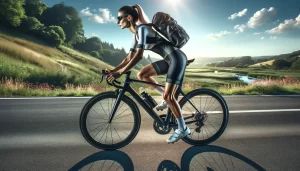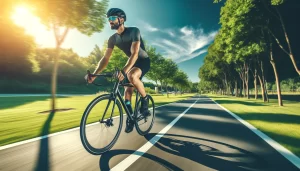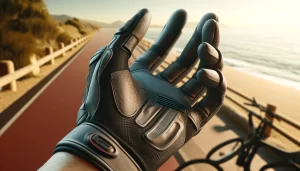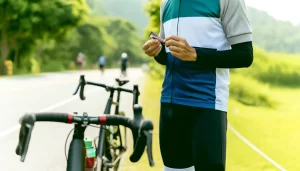Hydration for cyclists is not just a routine part of preparing for a ride; it’s a crucial element that can dramatically impact your performance and enjoyment.
Whether you’re a competitive racer or a casual weekend warrior, the choice between water bottles and hydration packs is more than just a convenience—it’s a decision that can influence your energy levels, comfort, and overall health during the ride. Understanding these options will help you stay properly hydrated, enabling you to pedal longer, harder, and more efficiently.
Deciding which hydration system to use can be as important as choosing the right bicycle. As you gear up for your next ride, consider how the length of the trip, the terrain, and your own personal needs might dictate the best way to carry your water.
This article explores the benefits and challenges of both water bottles and hydration packs, giving you the insights needed to make the best choice. Keep reading to discover how your hydration strategy can enhance your cycling experience and lead to more enjoyable and productive rides.
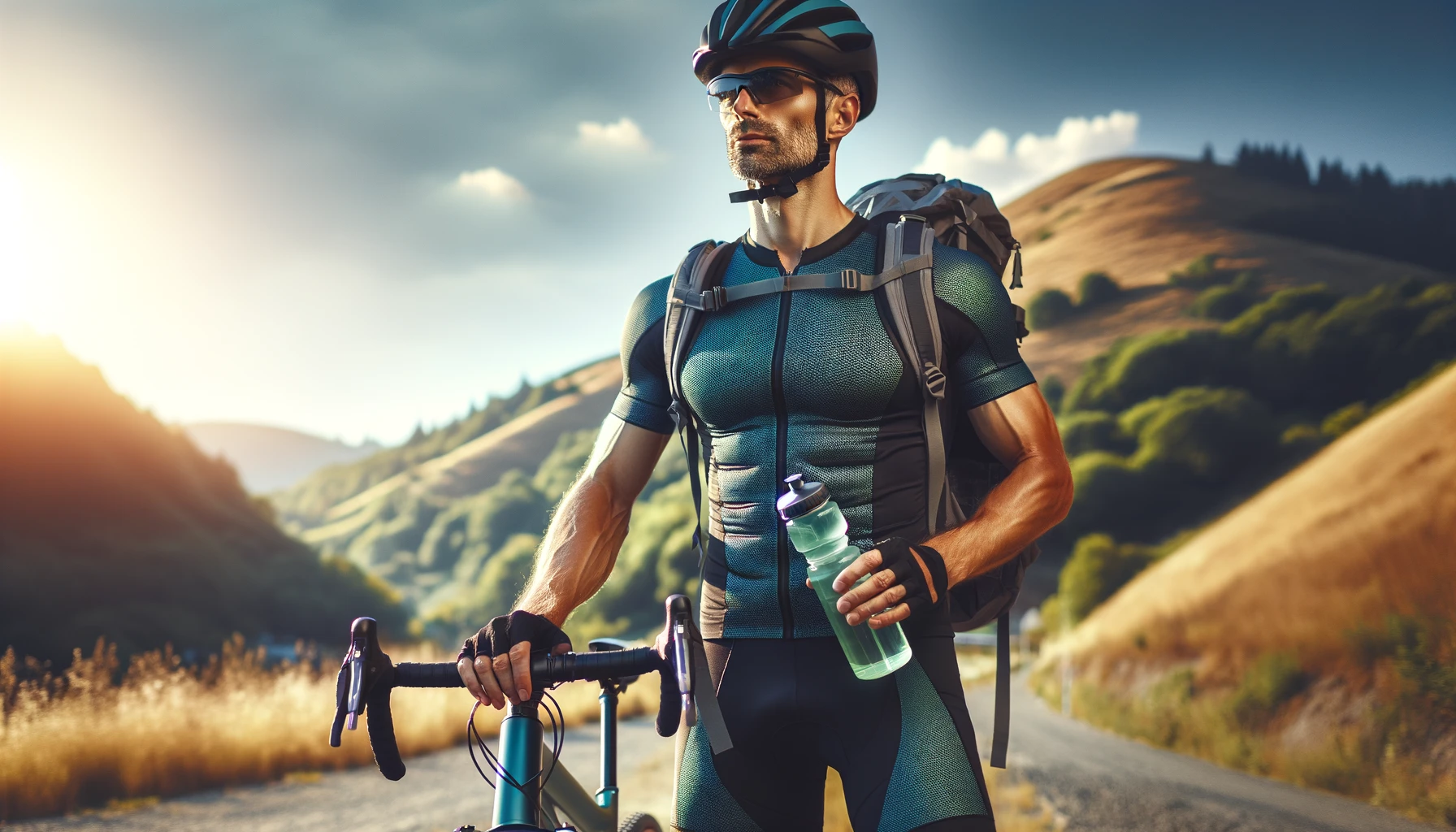
Image Source: Image Generated With DALL-E on ChatGPT
Ergonomics and Comfort: Choosing between Bottles and Backpacks
When selecting hydration solutions for cycling, ergonomics and comfort are paramount. Water bottles are typically mounted on the bike frame, offering easy access and straightforward usage. They are lightweight and ideal for shorter rides.
Hydration packs, worn on the back, provide a larger water capacity and can also house tools and snacks. They are favored for longer rides where more water and supplies are needed. Both options have unique ergonomic benefits, with hydration packs distributing weight evenly across the back and bottles ensuring minimal bike weight increase.
Steps for Choosing the Right Hydration System for Cycling:
- Assess Duration and Intensity: For short rides, consider a water bottle for its simplicity and lightness. For extended trips, a hydration pack might be more practical.
- Consider Comfort Preferences: Think about whether you prefer carrying weight on your bike or on your body. Hydration packs can affect back comfort but free the bike from added weight.
- Evaluate Additional Storage Needs: If you need to carry tools, food, or extra gear, a hydration pack with storage compartments is advantageous.
- Try on Hydration Packs: Before purchasing, wear the pack to check for a comfortable fit and ensure it does not shift while simulating cycling motions.
- Check for Easy Cleaning: Hydration systems need regular cleaning. Look for options that are easier to maintain to ensure water safety and taste.
Capacity Comparison: Water Bottles vs. Hydration Packs
Comparing water bottles and hydration packs in terms of capacity is crucial for cyclists to ensure adequate hydration during rides. Water bottles typically hold between 500 to 1000 ml, suitable for short to moderate rides.
They are easy to refill but require more frequent stops for longer distances. Hydration packs offer much larger capacities, usually between 1.5 to 3 liters, making them ideal for longer adventures or hot climates where hydration is critical. The choice depends largely on ride length, individual hydration needs, and personal preference for carrying weight.
Tips for Maximizing Hydration Capacity for Cyclists
- Calculate Your Hydration Needs: Consider the climate, ride length, and your sweat rate to determine how much water you need.
- Plan for Refills: If using water bottles, identify refill points on your route. With a hydration pack, ensure it’s fully filled before setting out.
- Use Multiple Bottles: On a bike equipped with several bottle cages, carry multiple bottles to increase capacity without needing to stop.
- Consider Add-Ons: For hydration packs, look for models that allow additional water bladders or bottles for extra capacity.
- Stay Consistent: Regularly sip small amounts to maintain hydration levels, especially during longer rides. This can prevent dehydration and the need for excessive stops.
Durability and Maintenance: Water Bottles vs. Hydration Packs
The longevity and maintenance of water bottles and hydration packs are crucial for cyclists. Water bottles, made from plastics or metals, are generally durable and withstand frequent use and exposure to the elements.
They are also easier to clean, usually dishwasher safe, and have fewer components that can break. Hydration packs, on the other hand, consist of a reservoir and a tube, which can be prone to leaks and require more intricate cleaning to prevent mold and bacteria. Regular maintenance is necessary to ensure they remain in good condition, especially after extended use in challenging environments.
Steps for Maintaining Durability in Cycling Hydration Systems:
- Regular Cleaning: Clean bottles and reservoirs after every ride, especially if you’ve filled them with anything other than water.
- Inspect Regularly: Check for signs of wear such as cracks in bottles or leaks in hydration pack reservoirs.
- Proper Storage: Store water bottles and hydration packs in a cool, dry place away from direct sunlight.
- Follow Manufacturer Instructions: Use cleaning kits and replacement parts as recommended by the manufacturer to extend lifespan.
- Use Protective Sleeves: Consider using protective sleeves for hydration packs to shield against punctures and abrasions.
Material Analysis: Plastic, Metal, and Water Reservoirs
Choosing the right material for water bottles and hydration reservoirs is essential for both health and performance. Plastic bottles are lightweight and cost-effective but can contain BPA unless specifically stated otherwise.
They are also prone to retaining odors and flavors. Metal bottles, often made from stainless steel or aluminum, are more durable and maintain the temperature of liquids better, but they are heavier. Hydration reservoirs are typically made from a flexible plastic material that is lightweight and collapsible, but they can be more difficult to clean and dry completely.
Tips for Selecting Materials in Hydration Systems:
- Health Considerations: Opt for BPA-free plastics or food-grade stainless steel to avoid chemicals leaching into your water.
- Weight and Insulation: Choose metal if you need to keep liquids cold or hot for extended periods, though consider the extra weight on longer rides.
- Ease of Cleaning: Prefer wide-mouth bottles for easy cleaning. Consider hydration packs with detachable hoses and wide openings.
- Taste Preservation: For taste-sensitive individuals, stainless steel is preferable as it doesn’t impart flavors to water like some plastics.
- Environmental Impact: Consider the environmental impact of your choice. Stainless steel, though initially more resource-intensive to produce, lasts longer and is fully recyclable.
How to Choose the Ideal Hydration System for Your Cycling Practice
Selecting the right hydration system for cycling depends heavily on the type of cycling you engage in, the duration of your rides, and your personal preferences. Road cyclists, for instance, might prefer the simplicity and aerodynamics of water bottles that can be quickly grabbed and replaced during high-speed rides.
Mountain bikers or those on longer or more remote trails might lean towards hydration packs for their larger capacity and ease of drinking without stopping. Considerations such as ride length, expected weather conditions, and the ability to refill on route will influence whether a lighter, less intrusive system or a more substantial, versatile system is suitable.
For competitive cyclists, minimizing weight and ensuring quick access to hydration can be crucial, whereas recreational riders might prioritize convenience and comfort. Hydration packs are particularly beneficial for those who don’t want to disrupt their rhythm to reach for a water bottle, offering a hands-free hydration solution through a bite valve and hose.
Additionally, the design and fit of the hydration pack are important to prevent discomfort and mobility restriction, especially over long distances. Look for packs that fit snugly without chafing, with breathable materials to reduce sweat and adjustable straps to stabilize the load as you ride.
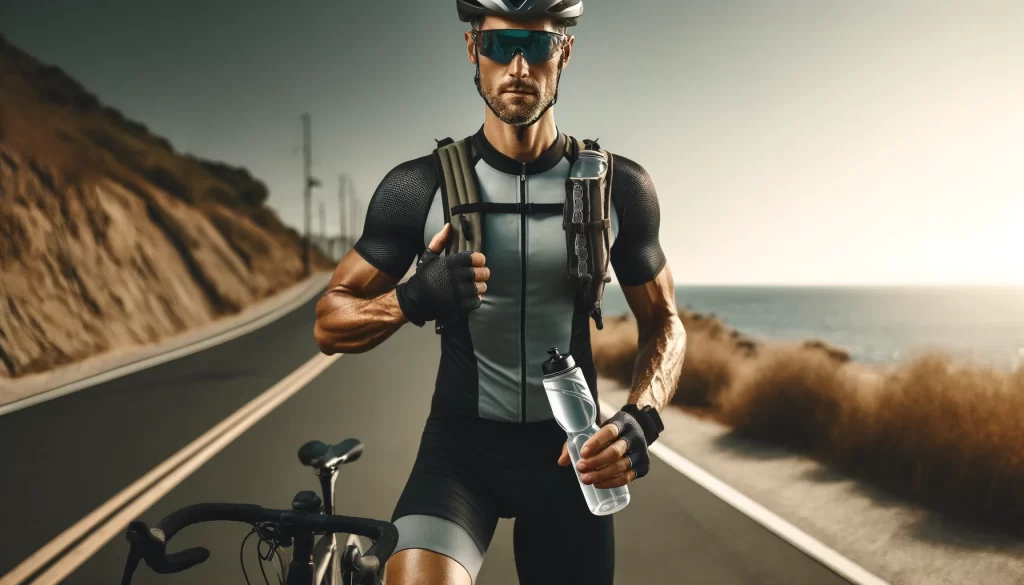
Image Source: Image Generated With DALL-E on ChatGPT
Tips for Efficient Hydration During Long Bike Rides
Efficient hydration is key to maintaining performance and comfort during long bike rides. Start by ensuring you are well hydrated before you even begin your ride, aiming to drink fluids regularly in the 24 hours leading up to a long trip.
Once on your bike, the goal should be to drink small amounts frequently, about every 15 to 20 minutes, rather than consuming large volumes infrequently. This steady intake helps maintain fluid balance and prevents the gastrointestinal discomfort that can come from gulping large amounts of water suddenly.
Additionally, consider the electrolyte content of your drinks, especially for rides lasting longer than an hour. Sweat loss can lead to significant reductions in sodium and other critical electrolytes, which help retain hydration and prevent cramping. Electrolyte-enhanced drinks or adding a pinch of salt to your water can be beneficial.
For exceptionally long rides, it may also be wise to carry multiple types of hydration, such as water for general hydration and an electrolyte-rich drink for more intense sections of the ride. Monitoring the color of your urine post-ride can be a good indicator of hydration status, with lighter colors generally indicating better hydration.
Frequently Asked Questions: Water Bottles vs. Hydration Packs for Cyclists
- Which is better for short rides, a water bottle or a hydration pack?
- For short rides, water bottles are generally more convenient and lighter. They’re easy to refill and usually sufficient for hydration needs under two hours.
- Are hydration packs worth it for long-distance cycling?
- Yes, for long rides or rides where refills aren’t readily available, hydration packs are invaluable. They offer a larger capacity and the convenience of drinking through a hose without needing to stop or slow down.
- Can hydration packs cause back pain?
- While hydration packs can add weight to your back, choosing a well-designed pack with good support and adjusting it properly can minimize any discomfort. It’s important to try different styles to see what works best for your body.
- Do hydration packs keep water cool?
- Most hydration packs are not insulated, which means water can warm up in hot weather. However, insulated versions are available, or you can freeze a portion of the water in the bladder overnight for cooler water longer into your ride.
- How often should I clean my hydration system?
- Cleaning after every use is recommended to prevent mold and bacteria growth, especially if you use liquids other than water. Bottles are generally easier to clean than hydration packs, which require special brushes and cleaning solutions.
- What should I consider when choosing between a bottle and a pack in terms of maintenance?
- Consider ease of maintenance; bottles are simpler to clean and dry. Packs require thorough cleaning of both the reservoir and the tube, which can be more labor-intensive.
In conclusion, choosing between water bottles and hydration packs for cycling largely depends on personal preference, the length and type of your rides, and your specific hydration needs. Water bottles offer simplicity and ease of use, ideal for shorter, less intense rides.
Hydration packs, on the other hand, provide greater capacity and easier access to fluids, making them better suited for longer rides or those in warmer climates.
Each cyclist should consider how these factors impact their comfort and performance to make the best choice for their needs. Remember, staying properly hydrated is key to maintaining your endurance and enjoyment on the bike, so choose a system that encourages you to drink regularly and efficiently.
Did you like the article? Be sure to check out more content like this in the Equipment And Accessories category, or see more related content below.

